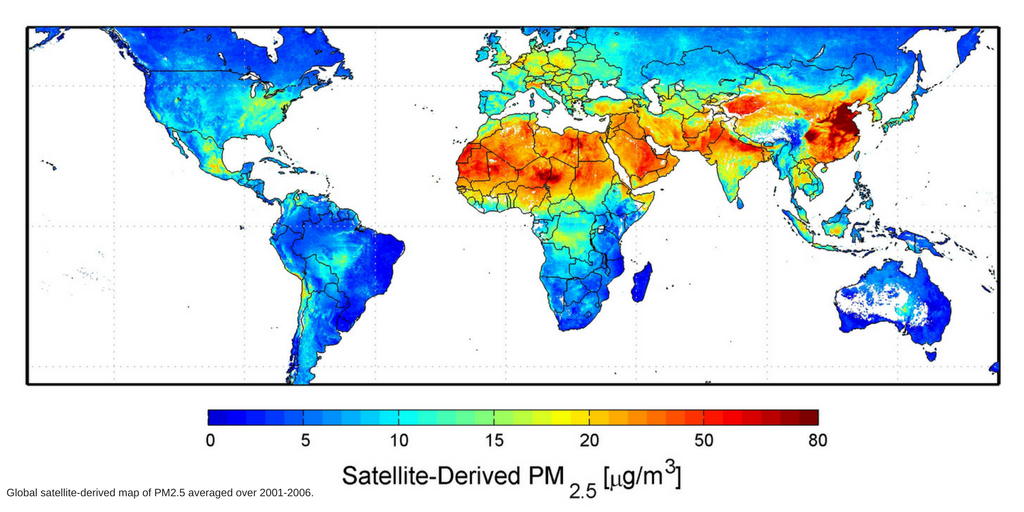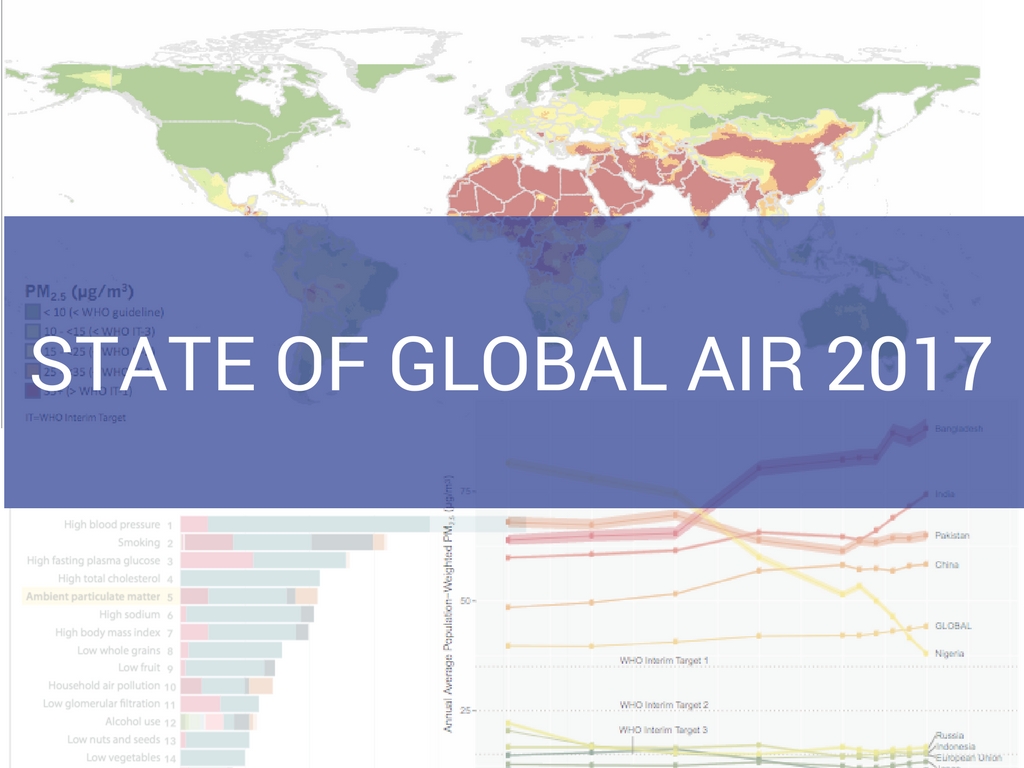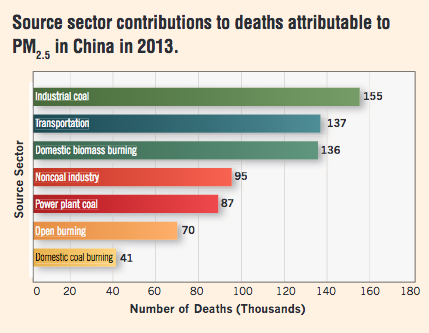

In October 2016, United Nations Children’s Fund (UNICEF) published the report “Clear the Air for Children” exposing the magnitude of the danger that air pollution poses for children.
The report shows that, in Asia alone, 300 million children live in areas with toxic levels of outdoor air pollution six times greater than the WHO set standard of 10m/m3 with 1.22 billion children in Asia living in areas that simply exceed WHO standards. Even more alarming, is that these estimates only account for exposure to outdoor air and do not include indoor air pollution. Moreover, UNICEF estimates that every year 600,000 children under-five years old die from diseases caused or aggravated by air pollution and the Organisation for Economic Co-operation and Development (OECD) says these estimates could be 50% higher by 2050.

The reason children have a higher exposure when compared to adults is because they breathe twice as fast and their air intake volume is more relative to their body weight. They are vulnerable and exposed to air pollution before they are even born by changes in the placental function. Air pollution can harm their bodies by affecting their developing organs, particularly their respiratory system and their brain. It has also been shown that air pollution can cause cognitive and physical development delays. These negative effects are carried over into their adulthood. Studies have shown that children living in highly polluted areas can have reduced lung capacity by up to 20% and are more likely to have respiratory problems either in childhood or later in life.
In Asia, the situation is bleak. Emissions from factories and vehicles are high and with poor regulation, waste is often burnt, energy is mostly coal-fueled and many households burn biomass for cooking. All combined, the outdoor and indoor air quality tends to be among the worst across the world.

Source:
We, at meo, are constantly checking air quality in different places. This article will take us to Hong-Kong, Hollywood road the heart of the bustling city, end of November 2017.
We installed one of our units in Guardian Fitness, a private fitness club, in October 2017. Data were particularly interesting on Wednesday 22nd November 2017, a polluted day, with outdoor PM2.5 at ‘Unhealthy for sensitive groups’ level. Guardian Fitness could be seen as one of the “Safe Heaven” offered to Hong-Kongers, with both PM2.5 and VOC kept in the “Green” zone.
PM2.5 refers to the small particles that we inhale when we breathe. They are tiny enough to go through your lungs, and enter your bloodstream triggering health reactions.
VOC refers to the gases exhaled by new furniture, new carpets, new mats, new paints … each time there is renovation ongoing, or when standard cleaning products are used, as they contain a lot of unhealthy chemicals.
Now, you know that you have 2 good reasons to join the lessons at Guardian Fitness:
Fitness and clean air!

Air pollution is ubiquitous and our desire to have offspring is natural….well at least for some of us! Today we want to bring to you a few facts on what is known about exposure to air pollution during pregnancy for you and your bump. Here are some useful and easy to follow safety tips.
Research has shown that prenatal exposure to pollutants can increase the risk of low birth weight and preterm delivery, which contributes to infant mortality and developmental disabilities. We are usually concerned about outdoor air pollution: ozone, particulate matter etc but other pollutants of concern that we should always keep in mind are those mostly present indoors, such as household cleaners, fumes from paint and carbon monoxide in addition to particulate matter that is present indoors.
Some research has shown that particulate matter affects the fetal development because it alters the intrauterine environment. This ‘early-life’ stress is a contributor to conditions that will increase the risk of cardiovascular disease, cognitive function, diabetes, obesity and problems in the nervous system later in life.
“Healthy pregnancies in women result in healthy children. Healthy children make healthy adults, societies and nations.” Dr Sherin Devaskar, Mattel Executive Endowed Chair of the department of pediatrics at Mattel Children’s Hospital UCLA

Source:

The University of Columbia, the Institute for Health Metrics and Evaluation (IHME) and the Health Effects Institute (HEI) recently published a special report on global exposure to air pollution and its effect on disease. The IHME is an independent health research center from the University of Washington and the HEI is a non-profit independent research organization that has, since 1980, been promoting / publishing impartial science on the effects of air pollution.
The objective of this report is to build on the Global Burden of Disease Study (GBD), which is the most comprehensive study worldwide that describes causes of mortality, major diseases, injuries and other factors that are a risk to health in a national, regional and global perspective. The latest publication by the GBD in 2015 reported that exposure to PM2.5 is the 5th biggest contributor to mortality and disease globally and accounts for 4.2 million deaths from heart disease, stroke, lung cancer, chronic lung disease and respiratory infections. Their recommendation is to continue tracking and analyzing pollution and PM2.5 in order to better understand how to reduce this burden on the health system and society as a whole.

The State of Global Air report highlights several important messages that we summarize here with some illustrative charts:



This report is issued yearly building on the GBD reports and making available new data. The 2018 report expects to share successful stories from cities and countries across the world on how they have improved air quality and public health.
In the interim, the most important is to continue collecting data on air quality and making changes in your day-to-day lives to improve the air you breathe.
If you want to explore the data more in detail, change the comparative countries or just learn more, go to: https://www.stateofglobalair.org/report
Source of information and graphics:
State of Global Air 2017. HEI, 2017. www.stateofglobalair.org. Data source: Global Burden of Disease Study 2015. IHME, 2016. (Accessed 02/27/2017).
We know for sure that city dwellers are highly affected by worsening air quality across the world and the majority of deaths caused by air pollution occur in cities. In the past ten years, cities have been working together as part of the group C40Cities to find solutions to protect their citizens. The Mayors of the cities that are part of this group have come up with some innovative proposals to push an Air’Volution that stems pollution in the cities. The end of March saw the announcement of bold plans to address locally created air pollution.
The C40Cities, launched in 2005, is a group created and led by cities that connects 90+ cities across 50+countries, representing 650+ million people and one quarter of the global economy. The group recognizes that cities generate most of the world’s carbon emissions and house almost 60% of the global population, hence the importance of their stance in transforming the systems that create the most carbon emissions: transport, building and waste.
It’s the collection of actions taken by cities to address air pollution and control vehicle emissions. Remember what started as a VW (Volkswagen) scandal? There is now a list of car manufacturers that have been found to manipulate the tests of car emissions. Not to mention that we now know the real polluting nature of diesel cars, even the EURO 6 diesel engines releases more fine particulate matter than heavy duty trucks. Such as:
“For too long, some vehicle manufacturers have been able to hide behind inconsistent regulation and consumer uncertainty about the damage their cars are causing,” said Mayor of Paris and C40 Chair, Anne Hidalgo. “This announcement is a wake-up call to car companies that they need to act now. Citizens of Paris and cities around the world demand clean air to breathe and this new scoring scheme will be key to helping achieve that. I am pleased that Paris, the city of the Climate Agreement, is working with London and Seoul to support this project.”
“This scheme is also a fantastic example of how big cities around the world can pool their expertise and their influence to encourage big industry to clean up its act. The toxicity of the air in London and many other big cities is an outrage, and schemes of the type we are introducing in London and Paris have the potential to make a massive difference to the quality of the air we all breathe.”
Other measures include:
Cities implementing low-emission zones: London has proposed to introduce an Ultra Low Emission Zone (ULEZ) in central London, where cars will have to meet the minimum emission requirements or pay a daily fine (£10). In Paris, vehicles are restricted access for the most polluting vehicles, through the use of Crit’Air stickers. And Seoul has recently designated a Green Transport Promotion Zone that restricts old diesel vehicles and construction equipment, the objective is to cut carbon emissions from vehicles by 40% and vehicle demand by 30%.
A number of Asian cities are part of the C40Cities: Auckland, Bangaluru, Bangkok, Beijing, Chengdu, Chennai, Delhi, Dalian, Dhaka, Guangzhou, Hanoi, Ho Chi Minh, Hong Kong, Jaipur, Jakarta, Kolkata, Mumbi, Nanjing, Singapore, Shenzen, Shanghai, Seoul, Sydney, Yokohama, Chennai, Mumbai, Tokyo and Wuhan. Most of these cities need to learn from experiences from other cities in reducing vehicles emissions.
Sources:
C40 CITIES – Air’volution
C40 CITIES – Press Release: Mayors of Paris and London Announce Car Scoring System to Slash Air Pollution on City Streets
The International Council on Clean Transportation – First look: Results of the German transport ministry’s post-VW vehicle testing
In Asia, air pollution is a daily fact, we tend to look at its level on a daily basis. Many decide not to exercise outdoor when pollution is high or simply to avoid going outdoors to protect their lungs. However, Particulate Matter accumulates in our pores throughout the day and we seldom worry about our skin exposure to air pollution.
In the past decades we have learnt a lot to protect our skin from the sun and its UV light. However, our skin is also vulnerable to air pollution and the public is slowly starting to acknowledge it. Protecting our skin is important because it is the barrier to keep organisms and detrimental chemicals out of our body. If the skin is damaged, we are more prone to allergies and reactions and diseases.
Since 1998, L’Oreal started to research the effect of air pollution on skin. The latest research was published in the International Journal of Cosmetic Science and included results from Mexico and Shanghai. It was found that pollutants such as ozone, car exhaust and industrial gases all increase oxidized proteins, increase sebum production, deplete the skin of vitamin E – which prevents skin damage, and squalene – a lipid that protects the skin from moisture loss; moreover recently a link between pollution and pigmentation was also found. All these effects combined accelerate the appearance of fine lines, destroy collagen and elastin and increase the loss of elasticity.
Dr. Giuseppe Valacchi, an associate professor in physiology at the Department of Life Sciences and Biotechnology at the University of Ferrara in Italy said “It’s as if ozone were designed specifically to injure our skin”.
Similarly, Zoe Draelos, M.D., consulting professor of dermatology at Duke University School of Medicine, Durham, N.C. said “I do not think that a lot of people fully understand or appreciate the effects of the nanoparticles that are generated from either internal combustion engines, cigarette smoke or byproducts of industrial processes,”. She added, “The truth is that these can have a profound effect on the skin in terms of premature skin aging, and we as dermatologists need not only to be aware of their action but also appropriately advise our patients in how to best avoid them.”